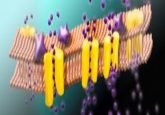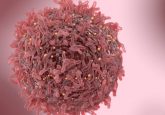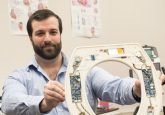Multiple genes implicated in vitamin B12 conditions

A symbiosis of basic science discoveries in mouse models and clinical observations in human patients has unraveled the mystery in rare vitamin B12 conditions.
One gene (MMACHC) has been linked to three genetic vitamin B12 conditions; however, two of these conditions are much rarer and present as clinically distinct from the third condition, cblC, the most common inherited vitamin B12 disorder. Scientists believed there must be more genes affected than previously recognized for the two rare conditions, and this is what a study led by a team at the Baylor College of Medicine (TX, USA) set out to uncover.
Published recently in Nature Communications, the findings indicate that the additional genes implicated in the rarer, more complex vitamin B12 disorders, also affect the generation of ribosomes, thus creating a hybrid syndrome.
“Vitamin B12, or cobalamin, is a dietary nutrient essential for normal human development and health and is found in animal-based foods but not in vegetables. Mutations in the genes encoding the proteins responsible for metabolic processes involving vitamin B12 result in rare human inborn errors of cobalamin metabolism,” explained co-corresponding author and Associate Professor, Ross A. Poché (Baylor College of Medicine).
 The toothpaste ingredient that could cause colitis
The toothpaste ingredient that could cause colitis
Most of us expend a great deal of effort and expense to maintain clean teeth, but could some element of our oral hygiene regimen be leading to issues elsewhere?
It was previously known that a mutation in the MMACHC gene directly caused cblC disease; however, the two rarer vitamin B12 conditions are not directly caused by anything out of the ordinary in the MMACHC gene. These conditions are caused by mutations in genes that encode RONIN and HCFC1 proteins, which – when modified – lead to the reduced expression of the MMACHC gene. The researchers leveraged this information to search for any additional genes that may be implicated in the two rarer conditions using mouse models.
“We developed mouse models carrying the exact same mutations that the patient with cblC-like disease have in HCFC1 or RONIN genes, and recorded the animals’ characteristics,” explained Poché. “We confirmed that they presented with the cobalamin syndrome as expected, but in addition we found that they had some ribosome defects. This is the first time that the HCFC1 and RONIN genes have been identified as regulators of ribosome biogenesis during development.”
This discovery should lead to more comprehensive treatment plans for those affected by the rare vitamin B12 conditions. The team now plans to identify exactly how ribosomes are disrupted in this disorder at a molecular level so that more effective therapies can be developed.
“There are many exciting aspects of this study, from the clinical implications to the basic science. The beauty is in how the work in patients is symbiotic with the work in the mouse model and how each system informs the other,” concluded co-author David S. Rosenblatt (McGill University; Quebec, Canada).





